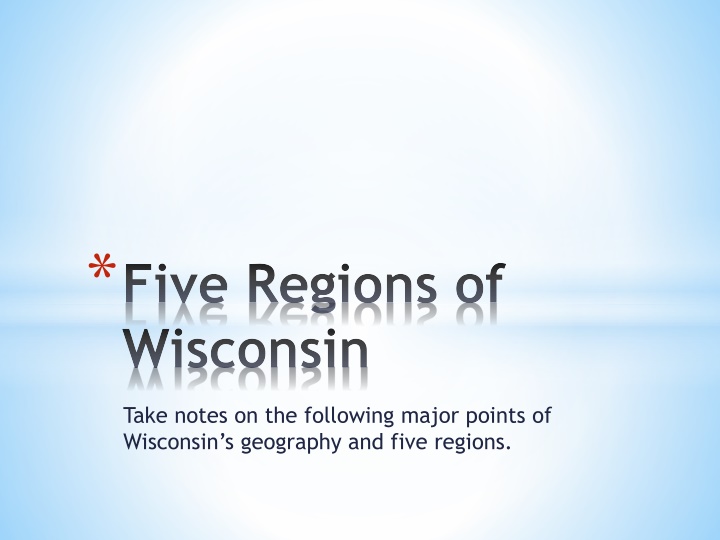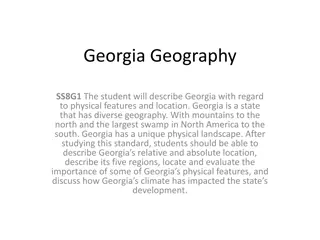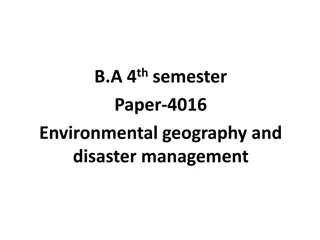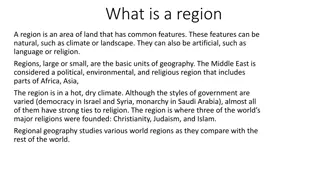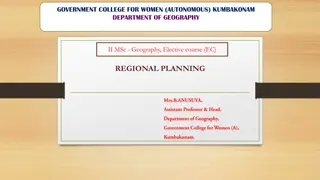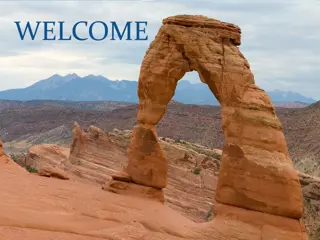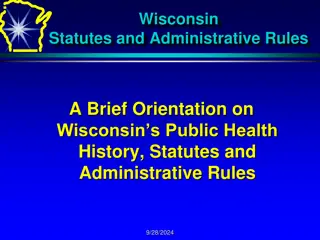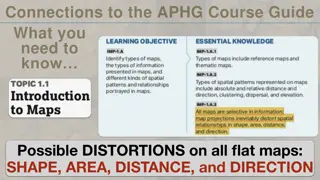Geography and Five Regions of Wisconsin: Key Points and Natural Features
Wisconsin's geography is influenced by the Great Lakes and the Mississippi River, affecting population distribution based on topography, soil, and climate. The state's historical reliance on soil resources for fur trade, lumber, farming, and manufacturing is evident. Varied regions like the Driftless Area and Glaciated Regions showcase diverse land use patterns shaped by topography, soil fertility, and climate conditions. Notable features include the Driftless Area, Baraboo Range, Highland, and Eastern Ridges, each reflecting unique geological characteristics like drumlins, kettles, and eskers.
Download Presentation

Please find below an Image/Link to download the presentation.
The content on the website is provided AS IS for your information and personal use only. It may not be sold, licensed, or shared on other websites without obtaining consent from the author.If you encounter any issues during the download, it is possible that the publisher has removed the file from their server.
You are allowed to download the files provided on this website for personal or commercial use, subject to the condition that they are used lawfully. All files are the property of their respective owners.
The content on the website is provided AS IS for your information and personal use only. It may not be sold, licensed, or shared on other websites without obtaining consent from the author.
E N D
Presentation Transcript
*Five Regions of Wisconsin Take notes on the following major points of Wisconsin s geography and five regions.
*On the Great Lakes (Superior and Michigan) and the Mississippi River on the west. *Population capacity depends upon: *Topography *Soil and climate *how can we survive/use a given area? *Physical Geography
*Soil as a Resource *Two centuries and a half ago, fur-bearing animals were our greatest asset (location of trade) *Forty years ago, pine forest was our greatest asset (lumber industry) *Farm produce wheat (hay, oats, and corn), dairying *Manufacturing *Human Environment Interaction
*Related to the use of the land by plants, by animals, and by man *Each differs in: *roughness or smoothness of topography *infertility or sterility of soil *climate *adaptation by wild/cultivated plants, animals, and by man. *Driftless vs. Glaciated Regions *Five Natural Regions
* Most attractive part of the state mountainous * Driftless Area * Baraboo Range Devils Lake State Park * Was completely surrounded by glaciated territory and is a large sample of what the rest of WI, as well as northern and eastern U.S. were like before the Glaciation period. * Highland to the north furnished temporary protection from the ice invasion * Rapid movement of glacial lobes in the lowland and west resulted in the final joining of these ice lobes south of the area, so that it was completely surrounded * Termination of forward movement (temperatures raised) began the retreat before the area was covered (followed their original path) * Mississippi River 1673 Pere Marquette and Sieur Joliet *Western Upland
*Largest proportion of the population due to level topography, fertile soil, and favorable climate. *Drumlins made by continental glaciers (these and the Driftless Area are what make WI known) * Tell us what direction the glacier moved * 5-140 feet above the adjacent plain, and range from narrow to 2 miles wide *Kettles deep hollows (some were filled with water and are now lakes or ponds) *Eskers built by glacial streams flowing beneath the ice narrow winding ridges of gravel (some are as long as 6 miles) *Eastern Ridges and Lowlands
*Not a continuous plain *Division of northern and southern WI (transition zone) *Region of low hills *Central Plains
*Prior to the glaciation, Wisconsin was part of a mountainous region similar to that of the Alps worn down mountains have been revealed particularly in this area. *Rapids and waterfalls are abundant in the streams and lakes and swamps are found everywhere *Better suited for forest than to crops with large swampy areas (huge for the lumber industry) steady water supply *Attraction to fishermen and visitors. *Rapids and Waterfalls furnish invaluable water power. *Northern Highlands
*Lake Superior is the largest body of fresh water in the world *Was a highland and is now a lowland because of the dropping of a block of the earth s crust in a fault *Chiefly a plain *Lake Superior Lowlands
